The next generation of embedded computer platforms integrated graphics acceleration
A new article published in the military New-Tech magazine, which deals with Comtel Electronics new COM HPC server platform. Flexible architecture that can be expanded and adapted to the customer's needs.
To read the article in NEWTECH magazine in Hebrew: NEW-TECH MAGAZINE
The next generation of embedded computer platforms integrated graphics acceleration
The digitalization transformation has created a demand for computing infrastructures that will deliver on going-increasing high-speed performance. Today there is a great demand for high-performance computing platforms with an emphasis on applications in the areas of deep learning, artificial intelligence, storage services and chain calculations.
The PICMG® standard, which sets open standards for high-performance computer-embedded systems, enables the huge market utilization of off-the-shelf industrial products ("COTS") and custom products designed for PCI Express card slots. The end user can add his own IO configuration and information configuration to address unconventional requirements.
At the end of 2020, and following the emergence of the IoT market, a new standard COM-HPC® (Computer on Module - High Performance) was published. This standard is a PICMG® funded open standard for creating a family of high-performance computer modules, and extending PCI standard applications to industrial and not just personal computers. The world of computer embedded systems is different from the commercial world in terms of features whether it is in the need for long-term availability, maintaining a certain temperature over a long period of time, mechanical durability, and customizable hardware and software for implementing and supporting module vendors in product developers. In a COM-HPC-based computing unit-based development model, the computing unit is a standard product and the customer connects the computing unit to the system interfaces using carrier cards.
For example for second generation of Comtel 20 SLOT-PCIe 4.0 chassis we implemented the carrier for COM-HPCTM server modules instead of proprietary Dual CPUs motherboard:
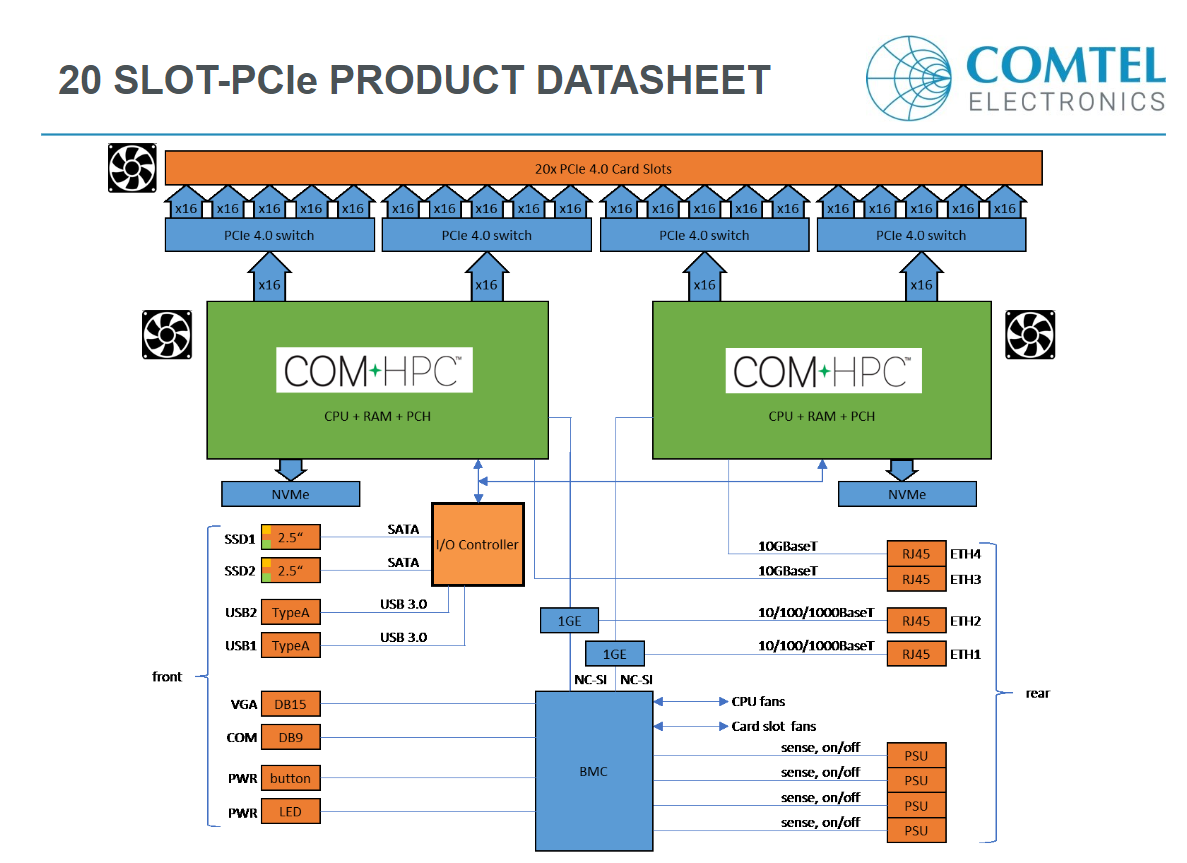 Picture 1: Architecture of the COM-HPC based platform from Comtel Electronics
Picture 1: Architecture of the COM-HPC based platform from Comtel Electronics
In order to serve the ongoing-increasing demand for end-server performance, scalability must be unlimited. The existing COM Express family standard (COMe for short) is limited to a 440-pin connection, and therefore does not allow enough interfaces for powerful edge servers. The physical performance of COM Express connectors is also slowly approaching their physical limit. While COM Express can easily handle the clock speed of 8.0 GHz and 8 Gbps of PCIe Gen 3, some technological advances are still required that will allow the transition to PCIe Gen 4 and Gen 5. Another limitation of COMe for High Performace Edge computing is the processor power (up to 80 watts in the current generation) and SODIMM memory modules using.
COM-HPC® is related to COM Express, but there are significant differences. COM-HPC® is designed to complement COMe, not replace it. COMe will continue to live for many years. Some of the features in COM-HPC® that are not normally available in COMe include:
• New High-speed (32 GT/s) and high density (400pins) theme connectors
• Expanding the working memory of the computer unit up to 8 full-size DIMMs
• Support for a processor with a power of up to 358W
• More high-speed interfaces
• Enables support for modules that include non-x86 processors such as Arm, GPU and FPGA
COM-HPC modules may host traditional x86 systems or host alternative CPU architectures such as ARM64 or RISC-V. While COM-HPC focuses primarily on x86 applications, the device supports heterogeneous architectures for specialized modules to improve performance and energy efficiency.
The COM-HPC® defines two types of modules - Client and Server applications in two different pinouts with different feature sets in 5 different sizes
The COM-HPC® standard server module is designed for computing applications without the need for displays that require intensive processing capability, large memory capacity and a lot of high-bandwidth I / O, including multiple 10Gbps or 25Gbps Ethernet, and up to 65 PCIe channels, at speeds of up to PCIe Gen 5.
Typical uses of rugged computer embedded server modules for use in space environments including applications such as autonomous vehicles, cell tower base stations, geophysical field equipment, medical equipment, protection systems and more. Server modules typically use full-size DIMMs and allow for extensive virtualization environment due to working memory size.
Client module in COM-HPC® standard adapted for advanced users who need one or more screens, a complete set of I / O with low, medium and very high bandwidth, powerful processors and modest size. A standard typical of uses in the field of medical equipment, advanced equipment, industrial equipment, casino gaming equipment, rugged space computers, transportation and protection systems and more and more.
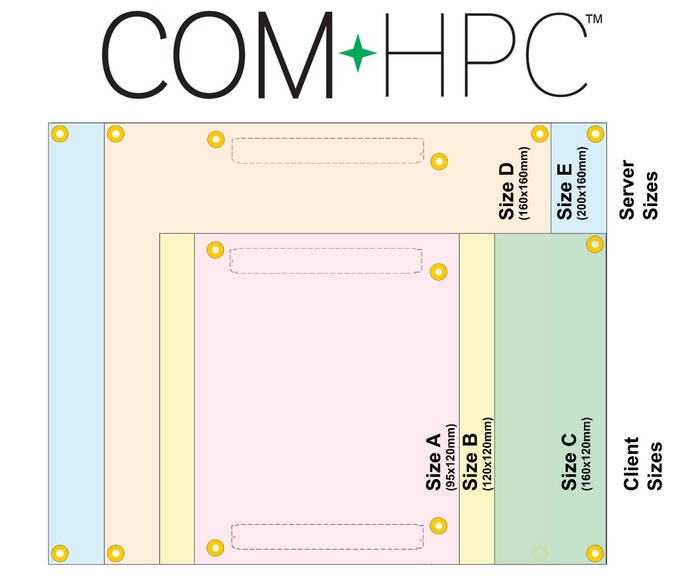 Picture 2: Sizes and features of computing modules in the COM HPCTM base specification
Picture 2: Sizes and features of computing modules in the COM HPCTM base specification
Platform management interface takes into account a wide range of COM-HPC modules. The management features are divided between COM-HPC Carrier Board, which can be unmanaged (C.U) or managed with BMC (C.M) and 3 levels of COM-HPC module management capabilities: unmanaged (M.U – no MMC), basic managed (M.B with MMC) and fully managed (M.F with fully featured MMC)
The management interface is described in separate specification document since it is optional feature for COM-HPC base specification. The following interfaces are supported: SMBus, IPMI via IPMB, IPMI via Ethernet, RedFish, iKVM.
The growth in the server market has grown significantly as many workloads, which support data storage, artificial intelligence and rich content, move to the cloud at an unprecedented speed. However, most of today's cloud infrastructures still use 30-year-old processor technologies. To meet the demands of the modern cloud, flexible computing platforms are required to integrate new microprocessor architectures. This flexibility will allow for scalability, security and power efficiency while uniquely focusing on today’s workloads and end computing
Since 1993, the German company Comtel Electronics has been a leader in the field of backplanes and computer-embedded systems. With production in advanced cutting-edge technologies based on high standards including ATCA, CompactPCI, MicroTCA, PXIe, VPX, CompactSerial and in combination with the latest high-speed connectors. As a member of the PICMG® Standards Committee and a manufacturer of computing platforms, Comtel Electronics has developed a product line of servers that enable high-bandwidth acceleration services, efficiently while significantly saving volume. The platform is ideally suited for high-performance computing (HPC), 'deep learning' (machine learning based on multi-layered artificial neural networks (processing), artificial intelligence (AI) and high-level storage technologies.
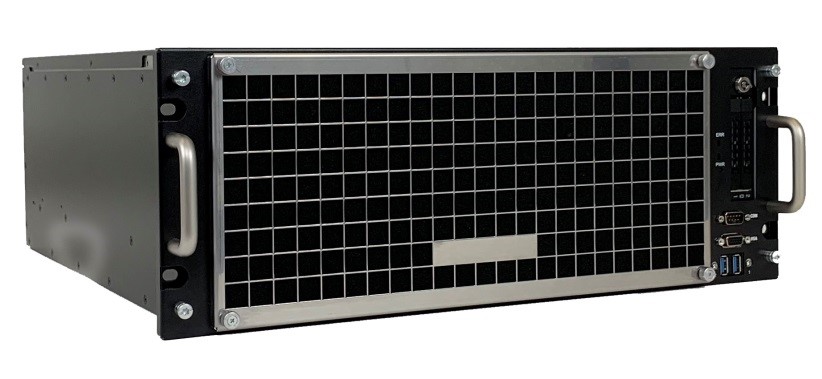 Front and rear view of the Comtel 4U 20 slot PCIe 19“ rack
Front and rear view of the Comtel 4U 20 slot PCIe 19“ rack
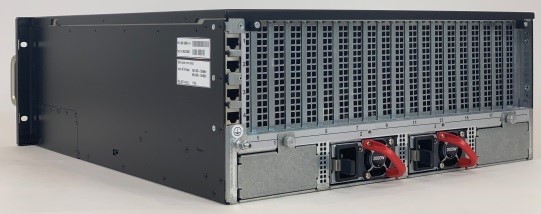
The new generation of this platform 20 SLOT-PCIe 4.0 provides the industrial customer with a compact 19” 4U-sized environment, 500mm deep that can be assembled for twenty full-size PCIe 4.0 x16 cards and two COM-HPC Server size D CPU modules. With high power density and optimal thermal performance up to 225W per single PCIe card slot at 0-40C ambient environment, the server is ideal for high-power computing cards and significant data traffic.
The server may include up to two CPU modules based on AMD Ryzen, EPYC Rome or Intel ICE Lake processors. Future processor generations will be integrated into the COM HPC standard and will enable performance enhancement and expansion without the need for significant editorial corrections and hardware updates.
Comtel Electronics' new platform can be operated, monitored and maintained remotely, similar to advanced computing units that run applications in advanced data centers.
As many other Comtel products new server platform family is fully true modular solution which provides unlimited customization capability in context of efficiency, redundancy, scalability and flexibility. Integrator can select not only numbers and CPU type, but also optimize the cost of really utilized PCIe slots (from 5 to 20), chosen cooling performance, numbers and type of hot-swappable power units in 1000-8000W range. This platform includes standard server I/O with VGA, USB and Ethernet and two 10Gbps Ethernet interfaces on top.
Comtel Electronics Group is a multinational company with management in Germany, and includes operations in Europe, USA, Australia, China and of course Israel. The company is active in the PICMG consortium and contributes to the development of advanced telecommunications standards such as AdvancedTCATM, MicroTCATM and COM-HPCTM. Comtel Israel CEO, Natan Saranga, summaries: “implementing Comtel Electronics’ solutions and products in the most advanced technologies in the world, is the success we bring to Israel”.
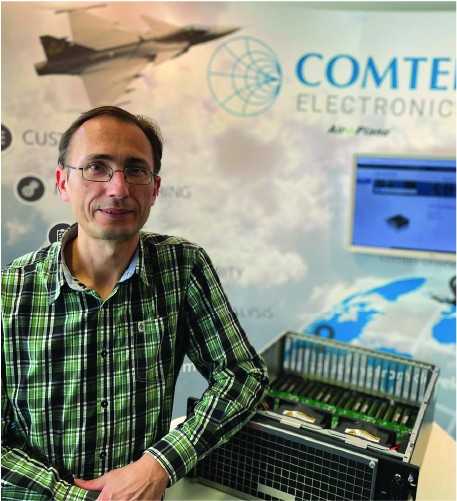 Alexey Mitrofanov Head of System Development COMTEL Electronics GmbH
Alexey Mitrofanov Head of System Development COMTEL Electronics GmbH
For further details: COMTEL ISRAEL -09-7677240 – sales@comtel.co.il – www.comtel.co.il
LinkedIn: COMTEL ISRAEL


